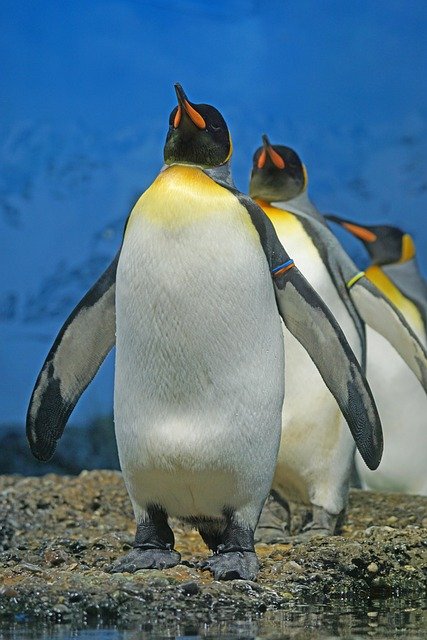**Title: "The Social Dynamics of Penguin Colonies: Understanding Their Unique Communication and Social Structures"

The Social Dynamics of Penguin Colonies: Understanding Their Unique Communication and Social Structures
Penguins are fascinating creatures that have captured the hearts of many with their charming waddles and distinctive tuxedo-like appearance. However, beyond their endearing looks lies a complex social structure and communication system that is crucial for their survival in the harsh environments they inhabit. In this post, we will explore the social dynamics of penguin colonies, focusing on their communication methods and social interactions.
The Importance of Social Structures
Penguins are highly social birds that live in large colonies, often numbering in the thousands. These colonies provide several benefits, including:
- Protection from Predators: By living in large groups, penguins can better defend themselves against predators such as seals and birds of prey.
- Cooperative Breeding: Many species of penguins engage in cooperative breeding, where individuals help care for the young of others, increasing the survival rate of chicks.
- Resource Sharing: Penguins often share information about food sources, which is essential for survival in their often nutrient-scarce environments.
Communication: The Heart of Penguin Social Life
Penguins have developed a variety of communication methods to facilitate social interactions within their colonies. These include:
Vocalizations
Penguins are known for their distinctive calls, which serve multiple purposes:
- Mate Attraction: During the breeding season, male penguins use unique vocalizations to attract females. Each species has its own set of calls, and even individual penguins have distinct vocal patterns.
- Chick Communication: Parent penguins and their chicks recognize each other through specific calls. This recognition is crucial, especially in crowded colonies where many chicks may be present.
- Alarm Calls: Penguins also use vocalizations to alert the colony to potential threats, helping to ensure the safety of the group.
Body Language
In addition to vocalizations, penguins communicate through various forms of body language:
- Posturing: Penguins often use specific postures to convey their intentions, such as puffing up their chests to assert dominance or bowing to show submission.
- Physical Contact: Social interactions often involve physical contact, such as preening or nudging, which helps to strengthen bonds between individuals.
Social Hierarchies
Within penguin colonies, social hierarchies can emerge based on factors such as age, breeding status, and individual health. These hierarchies can influence access to resources, mate selection, and even parenting roles. For example:
- Dominant Individuals: Higher-ranking penguins may have better access to food and mates, impacting their reproductive success.
- Subordinate Individuals: Lower-ranking penguins may need to rely on cooperative breeding or assistance from others to raise their young successfully.
Conclusion
The social dynamics of penguin colonies are a testament to the complexity of animal behavior and communication. Understanding these dynamics not only enhances our appreciation for these remarkable birds but also underscores the importance of conserving their habitats. As climate change and human activities continue to threaten penguin populations, recognizing the intricate social structures that support their survival is more crucial than ever.
By studying penguins and their social interactions, we gain valuable insights into the broader patterns of animal behavior and the interconnectedness of life in our ecosystems. Let’s continue to observe, learn, and protect these incredible creatures for future generations to enjoy!

Upvoted! Thank you for supporting witness @jswit.